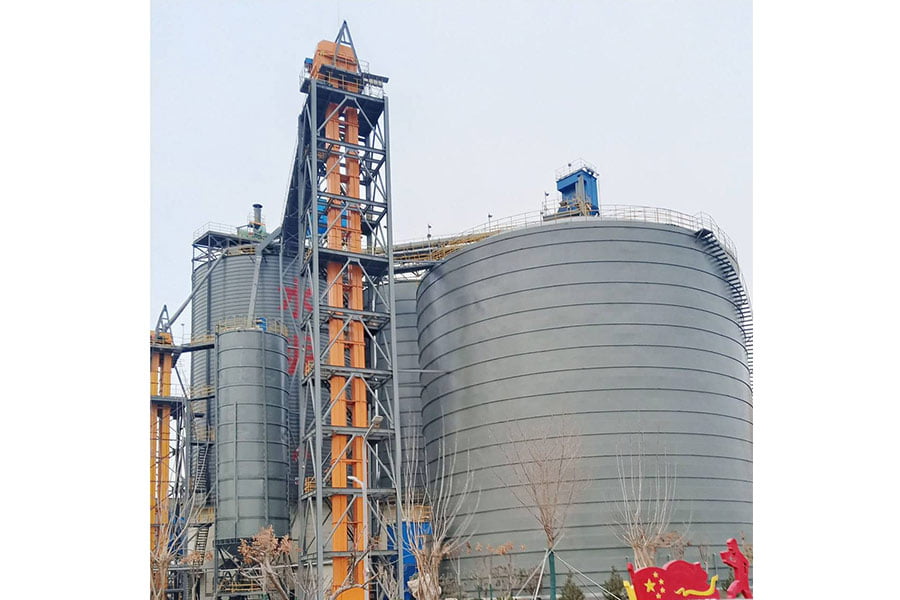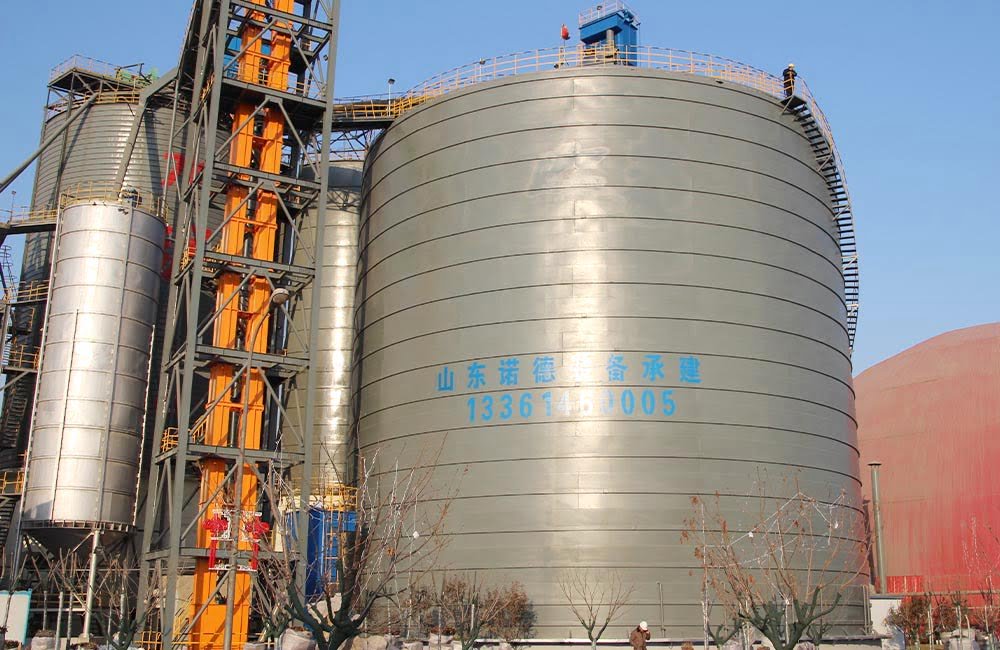介绍
谷物储存是农业供应链中的关键环节。在将小麦、玉米、大米等收获谷物运往加工厂或牲畜饲料厂之前,将其安全储存起来至关重要。筒仓在有效储存成吨谷物,同时保护库存谷物的质量和新鲜度方面发挥着至关重要的作用。
具体来说,与临时谷仓或仓库相比,专用谷仓设备具有独特的优势。本文将探讨什么是筒仓设备、筒仓设备的优点,以及筒仓设备如何帮助谷物种植者和经销商优化存储操作。
什么是谷物 筒仓工厂?

A 谷物 筒仓 是指包含多个大型垂直筒仓用于储存谷物的专门储存设施。其主要特点包括
- 塔式筒仓 - 由混凝土或钢材制成的圆柱形塔,可最大限度地减少所需的地面空间。其垂直设计在结构上可有效容纳谷物。
- 受控气候 - 如果温度和湿度波动较大,谷物会迅速变质。谷物筒仓能保持稳定、凉爽、干燥的条件,从而在不同季节更好地保持谷物的品质。
- 高容量 - 单个筒仓可容纳数千公吨谷物。筒仓厂拥有多个筒仓,可储存全部收成。
- 自动化 - 先进的设备实现了谷物入仓、筒仓间转运和出仓卡车装载的自动化,最大限度地减少了人工劳动。
为什么要投资专用谷物 筒仓工厂?

与临时谷物仓库相比,现场建造谷物筒仓厂具有很大优势:
优化储存条件
- 与没有气候控制系统的基本仓库相比,持续的温度/湿度监测和调节能更好地保持谷物在数月储存期间的完整性。这可以保持动物饲料的营养价值和未来种植的发芽活力。
库存管理效率
- 自动谷物处理和集成传感器可持续跟踪每个粮仓中的谷物含量、温度和湿度,使实时库存透明化。这样就能根据数据做出购买、出售或转移谷物的决策。
| 存储类型 | 储存条件 | 库存可见性 |
|---|---|---|
| 筒仓工厂 | 气候控制 | 自动传感器实现实时跟踪 |
| 仓库 | 最低限度的气候控制 | 需要人工检查 |
节省人工成本
- 自动输送设备在运输卡车、保温筒仓、干燥/清洗设备和出库卡车之间输送谷物,只需极少的人工干预。这大大节省了人力成本。
质量保障
- 与露天仓库相比,密封筒仓能更有效地保护谷物免受污染物、害虫和过量水分的侵害。谷物质量下降的情况也会大大减少。
提高谷物处理效率
安装大容量粮仓设备是重要的第一步,但优化谷物装卸作业还需要高效的出仓物流战略。以下是需要解决的关键领域:
- 战略地点
- 职位 筒仓厂 靠近主要铁路线和高速公路,以便于装载单元列车或卡车,以经济高效的方式将谷物运往码头和加工设施。
- 装载/卸载优化
- 安装快速释放门、高速传送带和快速批量称重设备,最大限度地缩短装卸时间。分配收货/发货通道。
- 舰队协调
- 根据装载要求匹配卡车/轨道车容量,尽量减少超载和不必要的运输。协调进货和出货。
- 库存优化
- 使用谷物库存管理软件,将来自自动粮仓传感器和进货通知的数据融合在一起。这有助于根据市场价格和需求预测,做出购买、储存或出售谷物的数据驱动型决策。
| 重点领域 | 行动 | 成果 |
|---|---|---|
| 战略地点 | 靠近主要交通基础设施 | 降低运输成本 |
| 装载/卸载 | 快速门、批量称重器、输送吞吐量 | 更快的周转时间 |
| 舰队协调 | Match transport capacity to loads | Prevent overloads, extra trips |
| 库存优化 | Inventory tracking software | Data-driven buy/sell decisions |
Leveraging Technology for Efficiency
In addition to automation, silo plants can leverage technologies like blockchain, predictive analytics, and drones to optimize operations:
- Use blockchain to digitize grain transactions – this establishes provenance and builds supply chain transparency.
- Aggregate sensor data and grain supply/demand data to build predictive models forecasting optimal inventory levels.
- Employ automated drones to perform external silo inspections, improving safety and reducing the need for dangerous manual inspections.
结论与未来展望
Constructing a dedicated grain silo plant enables considerable storage optimizations over makeshift warehouses – from climate controlled conditions that better preserve grain quality to sensors and automation that create transparent, efficient inventory handling.
As technology continues advancing, we can expect even smarter silo plants that leverage AI, machine learning, and blockchain to further enhance grain storage capabilities and supply chain transparency. The future of grain warehousing is undoubtedly centered around purpose-built silo plants rather than general storage facilities. Operators who leverage such innovations will gain considerable market advantages.
常问问题
Q: What types of grain are stored in silo facilities?
A: Corn, wheat, rice, soybeans and sorghum are among the most common grain types stored in silos. The facilities handle bulk volumes of these cereal grains.
Q: How does a silo plant monitor grain inventory?
A: Automated sensors track weight load levels, temperature and humidity in each silo on a continual basis. Software aggregates this sensor data to provide real-time visibility and reporting on total grain inventories down to the kilogram.
Q: What happens if a silo breaks down?
A: Sophisticated silo plants have redundancy designs that can reroute and handle the entire grain load with alternate silos or containment solutions in the event of malfunctions. Staff are also trained for emergency contingency procedures.
Q: How many silos are in a typical grain storage facility?
A: Most dedicated grain silo plants have between 3 to 8 storage silos within a single facility, with each tower silo able to hold several thousand metric tons of cereal grains depending on dimensions and grain type. Facilities may expand over time.




